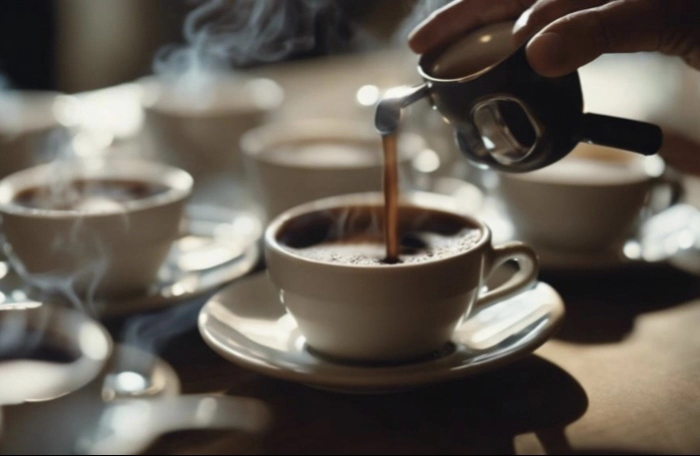Espresso is often seen as the strongest coffee, but is this really true? The answer depends on how you define “strong.” Strength can refer to caffeine content, flavor intensity, or even the brewing method. This article explores these factors in detail to help you understand whether espresso truly holds the title of the strongest coffee.
What Makes Coffee Strong?
Before comparing espresso to other coffee types, we need to define “strong.” Coffee strength can be measured in three ways:
- Caffeine Content – How much caffeine is in a serving?
- Flavor Intensity – How bold or concentrated does the coffee taste?
- Brewing Method – How much coffee is extracted in a short time?
Each of these factors plays a role in determining whether espresso is the strongest coffee.
Caffeine Content: Is Espresso the Highest?
Many people assume espresso has the most caffeine because it tastes strong. However, caffeine content depends on serving size and brewing method.
How Much Caffeine Is in Espresso?
A single shot of espresso (about 30 ml) contains 63 mg of caffeine on average. A double shot has around 125 mg. Compared to other brewing methods, espresso has a higher caffeine concentration per milliliter, but not necessarily per cup.
How Does Espresso Compare to Other Coffees?
- Drip Coffee (240 ml) – 95–200 mg of caffeine
- Cold Brew (240 ml) – 100–200 mg of caffeine
- French Press (240 ml) – 80–135 mg of caffeine
While espresso has more caffeine per ounce, a full cup of drip coffee usually contains more total caffeine. So, if you drink a whole cup, drip coffee might be “stronger” in terms of caffeine.
Flavor Intensity: Why Does Espresso Taste So Strong?
Even if espresso doesn’t always have the most caffeine, it often tastes stronger. This is because of:
High Pressure Extraction
Espresso is made by forcing hot water through finely-ground coffee at high pressure (9–10 bars). This extracts more oils and dissolved solids quickly, creating a rich, concentrated flavor.
Crema: The Signature of Espresso
The golden-brown foam on top of espresso, called crema, contains emulsified oils and CO₂. This adds a velvety texture and enhances the strong, bold taste.
Roast Level
Espresso beans are often roasted darker than filter coffee beans. Dark roasts have a bolder, more bitter flavor, contributing to the perception of strength.
Brewing Method: How Extraction Affects Strength
Espresso’s quick extraction (25–30 seconds) pulls out flavors and caffeine efficiently. Other methods, like French press or drip, take longer and may extract different compounds, leading to a smoother but less intense taste.
Caffeine Extraction Differences
- Espresso – High pressure extracts caffeine quickly, but the short contact time limits total caffeine per serving.
- Drip Coffee – Longer brewing time allows more caffeine to dissolve, even if the concentration is lower.
This means espresso is stronger in small doses, but larger coffee servings can deliver more caffeine overall.
Does Coffee Type Affect Strength?
Not all espresso is the same. Different beans and blends change the strength:
Arabica vs. Robusta
- Arabica – Smoother, sweeter, less caffeine (1.2–1.5% by weight).
- Robusta – More bitter, almost double the caffeine (2.2–2.7%).
Many espresso blends use some Robusta for extra crema and kick, making them stronger in caffeine and taste.
Single-Origin vs. Blends
- Single-origin – Unique flavors, but may be milder.
- Blends – Often designed for balance and intensity, making them taste stronger.
Serving Size Matters
A typical espresso shot is just 30 ml, while a standard coffee cup is 240 ml. Drinking a full cup of espresso (like a doppio or lungo) would provide much more caffeine, but most people don’t consume espresso in large volumes.
Ristretto vs. Lungo
- Ristretto – A shorter pull (15–20 ml), more concentrated, slightly less caffeine.
- Lungo – A longer pull (50–60 ml), more diluted, slightly more caffeine.
Even within espresso, strength varies based on preparation.
Other Strong Coffee Contenders
Espresso isn’t the only strong coffee. Here are some rivals:
Turkish Coffee
- Finely ground, unfiltered, boiled in water.
- High caffeine and thick texture due to no filtration.
Cold Brew Concentrate
- Steeped for 12–24 hours, highly concentrated.
- Often diluted, but straight concentrate is very strong.
Moka Pot Coffee
- Brewed under pressure, stronger than drip but not as intense as espresso.
- Contains more caffeine per ml than regular coffee.
Health Effects of Strong Coffee
Stronger coffee means more caffeine, which has pros and cons:
Benefits
- Increased alertness – Caffeine blocks adenosine, reducing tiredness.
- Improved physical performance – Enhances endurance and strength.
- Antioxidants – Coffee contains polyphenols that fight inflammation.
Drawbacks
- Anxiety & jitters – Too much caffeine can cause nervousness.
- Sleep disruption – Drinking strong coffee late in the day affects sleep.
- Digestive issues – Highly acidic or concentrated coffee may upset the stomach.
How to Make Espresso Stronger
If you want an even stronger espresso, try these tips:
- Use a darker roast – More bitter, intense flavors.
- Increase the dose – Use more coffee grounds (18–20g instead of 14–16g).
- Grind finer – Increases extraction and strength.
- Add Robusta beans – Boosts caffeine and crema.
Conclusion
Flavor intensity is another factor where espresso shines The high pressure extraction process produces a bold rich taste that many associate with strength Yet this intensity doesn’t always translate to higher caffeine levels as brewing time and coffee quantity play significant roles
If you want the strongest coffee in terms of concentrated taste and quick caffeine kick, espresso is the winner. But if you prefer high total caffeine in a full cup, other brewing methods take the lead.
Ultimately, “strongest” is subjective. The best coffee is the one that suits your taste and caffeine needs.
Related topics:
How Long to Pull a Double Shot of Espresso
Buon Giorno Coffee: A Journey to Exceptional Espresso & Beyond
Where to Buy Gaggia Espresso Machines: A Complete Guide


